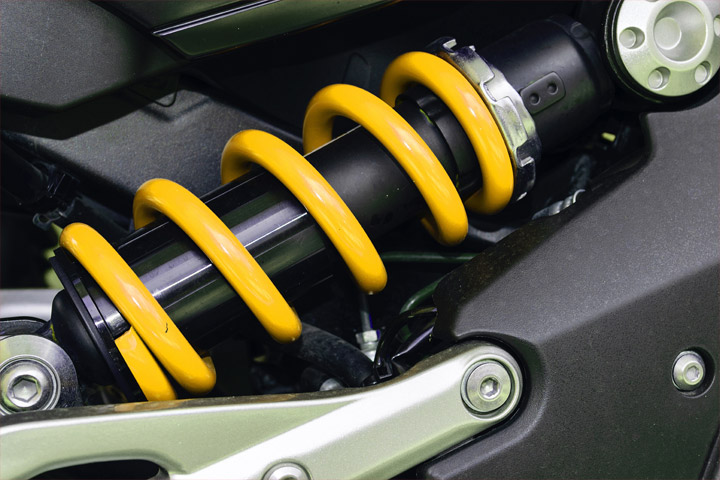When to Replace Struts and Shock Absorbers and How
Tue, 04/24/2012 - 10:39
What do struts and shock absorbers do? When do we need to replace them? First off, let’s explain the difference between a shock absorber and a strut. A shock absorber is an independent part that works in conjunction with the existing suspension system, while a strut is an integral part of the suspension system. Both struts and shocks control body motion and dampen wheel movement.
Basically, when your car drives over bumps or dips in the road or when you accelerate or stop quickly or change lanes abruptly, the body of the car reacts to inertia. The shocks and struts absorb these forces, allowing the body of the car to react to them with a limited or cushioned allowance. This controlled allowance prevents the tires from bouncing over bumps and prevents the body of the car from rebounding too quickly. Imagine that your tires are like basketballs being dribbled down the street. The strut or shock restricts the amount of bounce, keeping the tire from spending any unnecessary time away from the pavement. It also prevents the car from bottoming out over severe bumps or dips.
Shocks and struts are very important to the overall ride of the vehicle. Your car will handle better and stop over shorter distances when your shocks and struts are performing properly, and your tires will adhere to the road better over bumps and dips. Good shocks and struts will limit your vehicle from excessive nosediving during short stops. They will also help prevent your ABS brake system from engaging prematurely.
Shocks and struts are filled with either oil or a compressed gas. If the oil or gas seeps out, the shock or strut becomes soft and it loses its ability to work properly. If you notice a change in the way your car rides, especially over bumps, check your shocks. This change may be gradual and thus hard to detect.
Another telltale sign is if your tire or tires develop flat spots or cupping on the treads. This could be an indication that the tires are bouncing over bumps in the road.
A knocking noise over bumps or dips may be an indication that the strut or shock is broken either internally or at one of the mounting points.
Oil dripping down the cartridge of the shock or strut is a clear indication that the shock is in need of replacement.
Strut towers (mounts) sometimes have to be replaced along with the strut. This is where the strut mounts at the top to the body of the car. Have your mechanic check these when checking your struts.
When replacing your struts or shocks, look for a name-brand nitrogen gas shock, preferably with a lifetime guarantee. High-pressure shocks will give a stiffer ride, while low-pressure shocks will give a softer ride. Shocks and struts should not be changed to raise or lower the height of the vehicle. This is the job of the springs.
Good shocks and struts prevent the body of the vehicle from compressing rapidly when stopping short and/or changing lanes suddenly, for instance to avoid an accident. This is especially important for SUVs that have a high center of gravity and are more prone to rollovers. Good, tight shocks and struts are very important to vehicles with ABS (antilock braking system). ABS prevents the tires from locking up, making it possible to steer under hard braking conditions. Turning hard and braking hard at the same time will cause the car to pitch to one side. A good strut or shock will minimize this pitch.

[{"target_id":"256088","alt":null,"title":null,"width":"720","height":"480","url":"\/sites\/default\/files\/articles-images\/81\/6-Ways-To-Know-To-Replace-Shocks-Struts.jpg"},{"target_id":"256089","alt":null,"title":null,"width":"1000","height":"1000","url":"\/sites\/default\/files\/articles-images\/08\/when-to-replace-struts-and-shock-absorbers-and-how.jpg"}]




